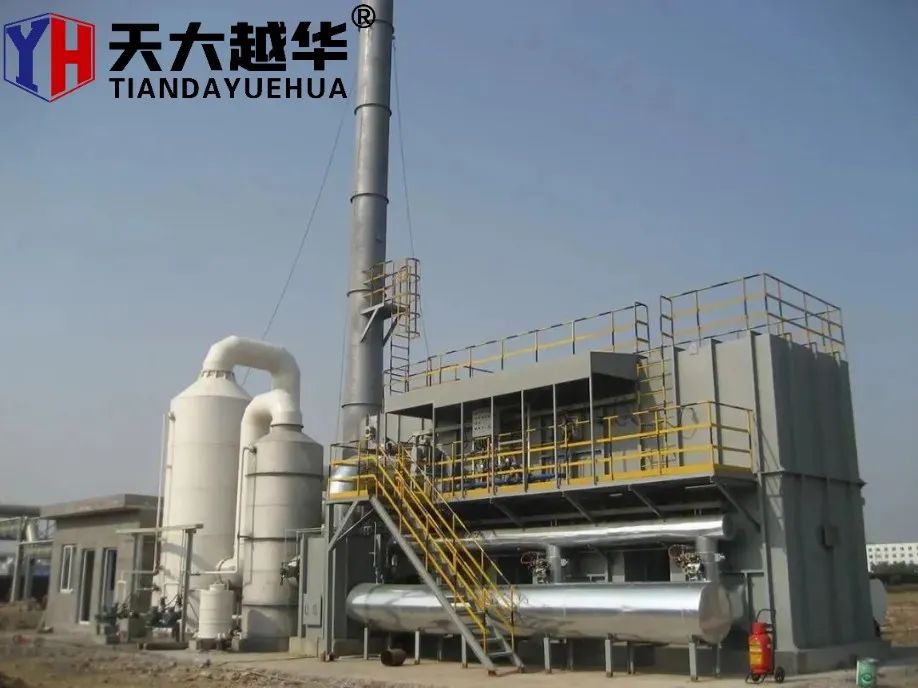Quieting the Flame: Measures to Minimize Noise Pollution from Oxidizer Incinerator RTOs
2024-04-08
In the realm of industrial operations, the pursuit of environmental responsibility extends beyond air and water pollution control to encompass noise pollution mitigation. Oxidizer Incinerator Regenerative Thermal Oxidizers (RTOs), while essential for air quality management, can contribute to noise pollution if not properly managed. Fortunately, measures are in place to address this concern and ensure that Oxidizer Incinerator RTOs operate with minimal noise emissions. In this blog, we'll explore these measures and their role in quieting the flame of industrial pollution control.
Understanding Noise Pollution from RTOs
Oxidizer Incinerator RTOs operate by subjecting exhaust gases to high temperatures within a combustion chamber to neutralize volatile organic compounds (VOCs) and hazardous air pollutants (HAPs). While this process is crucial for environmental protection, it can generate noise due to the flow of gases, mechanical components, and combustion processes within the RTO system. Excessive noise emissions from RTOs can disrupt surrounding communities, affect worker safety, and violate regulatory limits, necessitating measures to minimize noise pollution.
Measures to Minimize Noise Pollution
1. Engineering Controls: The design and engineering of Oxidizer Incinerator RTOs incorporate noise-reducing features to mitigate noise emissions. This includes the use of sound-absorbing materials, such as acoustic insulation and mufflers, to dampen noise generated by mechanical components and combustion processes within the RTO system. Additionally, optimizing the design of airflow pathways and implementing sound baffles can help minimize noise propagation.
2. Location and Enclosure: Situating Oxidizer Incinerator RTOs in strategic locations away from sensitive receptors, such as residential areas, can help minimize the impact of noise emissions on surrounding communities. Furthermore, enclosing RTOs within soundproof enclosures or buildings can provide additional noise attenuation, reducing the transmission of noise to the external environment.
3. Maintenance and Lubrication: Regular maintenance and lubrication of mechanical components within Oxidizer Incinerator RTOs are essential for minimizing noise emissions. Proper maintenance practices ensure that equipment operates smoothly and efficiently, reducing the likelihood of noise-generating vibrations and friction within the system.
4. Operational Optimization: Implementing operational strategies to minimize noise emissions from Oxidizer Incinerator RTOs, such as scheduling maintenance activities during off-peak hours and optimizing equipment operating parameters to reduce noise levels, can help mitigate the impact of noise pollution on surrounding areas.
5. Community Engagement: Engaging with local communities and stakeholders to communicate noise mitigation efforts and address concerns related to noise pollution from Oxidizer Incinerator RTOs fosters transparency and collaboration. This can involve conducting noise monitoring studies, soliciting feedback from community members, and implementing measures to address specific concerns raised by stakeholders.
Benefits of Noise Mitigation
Minimizing noise pollution from Oxidizer Incinerator RTOs offers several benefits:
- Compliance with Regulations: By implementing measures to minimize noise emissions, industrial facilities can ensure compliance with regulatory limits and avoid potential fines or penalties for exceeding noise pollution standards.
- Enhanced Community Relations: Addressing noise concerns demonstrates a commitment to environmental stewardship and community well-being, fostering positive relationships with neighboring communities and enhancing the reputation of industrial facilities.
- Improved Worker Safety and Productivity: Reductions in noise levels within industrial facilities contribute to a safer and more comfortable work environment for employees, leading to increased productivity and morale.
Conclusion
In conclusion, minimizing noise pollution from Oxidizer Incinerator RTOs is essential for promoting environmental sustainability, safeguarding community well-being, and ensuring regulatory compliance. Through a combination of engineering controls, location and enclosure strategies, maintenance practices, operational optimization, and community engagement efforts, industrial facilities can effectively mitigate noise emissions from RTOs and foster a harmonious coexistence with surrounding communities. By prioritizing noise mitigation measures, businesses can achieve their pollution control objectives while promoting a quieter and more sustainable industrial environment.



